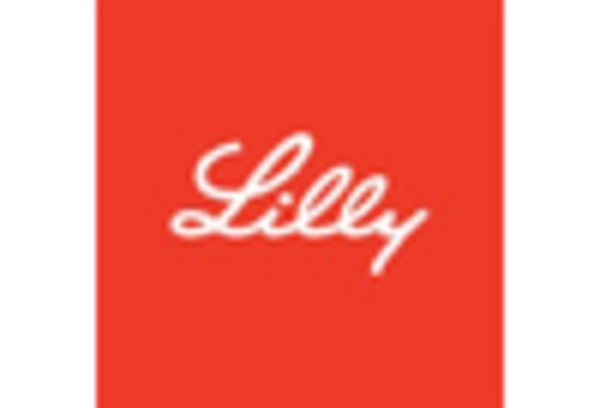Advancements in Pharmaceutical Solutions
Innovations in pharmaceutical treatments are driving the overactive bladder-treatment market in Germany. The introduction of new medications, such as anticholinergics and beta-3 adrenergic agonists, has provided patients with more effective options for managing OAB symptoms. Recent data suggests that the market for these pharmaceuticals is projected to grow at a CAGR of around 5% over the next few years. Additionally, the development of combination therapies may enhance treatment efficacy, leading to improved patient adherence. As healthcare professionals become more familiar with these advancements, the adoption of new therapies is likely to increase, thereby expanding the market. The ongoing research and development efforts in this area indicate a promising future for pharmaceutical solutions in the overactive bladder-treatment market.
Increasing Prevalence of Overactive Bladder
The rising incidence of overactive bladder (OAB) in Germany is a crucial driver for the overactive bladder-treatment market. Recent studies indicate that approximately 10-15% of the adult population experiences symptoms of OAB, leading to a growing demand for effective treatment options. This condition significantly impacts the quality of life, prompting patients to seek medical intervention. As awareness of OAB increases, healthcare providers are more likely to diagnose and treat this condition, further fueling market growth. The increasing prevalence is also linked to an aging population, as older adults are more susceptible to urinary disorders. Consequently, the overactive bladder-treatment market is expected to expand as more individuals seek solutions to manage their symptoms.
Growing Investment in Healthcare Infrastructure
The enhancement of healthcare infrastructure in Germany is a significant driver for the overactive bladder-treatment market. Increased government and private sector investments in healthcare facilities and services are improving access to diagnosis and treatment for OAB. This investment is reflected in the expansion of urology departments and specialized clinics, which are better equipped to address urinary disorders. Furthermore, the integration of advanced diagnostic tools and treatment technologies is likely to improve patient outcomes. As healthcare systems evolve, the overactive bladder-treatment market is expected to benefit from improved patient access and care quality, ultimately leading to higher treatment rates and market growth.
Increased Focus on Patient Education and Support
The emphasis on patient education and support is becoming a pivotal driver for the overactive bladder-treatment market. Healthcare providers in Germany are increasingly recognizing the importance of informing patients about OAB and its management. Educational initiatives aim to empower patients to understand their condition, treatment options, and lifestyle modifications that can alleviate symptoms. This focus on education is likely to enhance treatment adherence and patient satisfaction, ultimately leading to better health outcomes. As patients become more informed, they may be more proactive in seeking treatment, thereby stimulating growth in the overactive bladder-treatment market. The integration of support groups and resources further complements these efforts, fostering a community of informed patients.
Rising Demand for Non-Invasive Treatment Options
There is a notable shift towards non-invasive treatment options for overactive bladder in Germany, which is influencing the market dynamics. Patients increasingly prefer treatments that minimize surgical risks and recovery times. Non-invasive therapies, such as neuromodulation and behavioral therapies, are gaining traction as effective alternatives to traditional surgical interventions. This trend is supported by a growing body of evidence demonstrating the efficacy of these methods. As more patients seek these options, the overactive bladder-treatment market is likely to see a rise in demand for non-invasive solutions. The emphasis on patient-centered care further reinforces this trend, as individuals prioritize comfort and convenience in their treatment choices.

















Leave a Comment